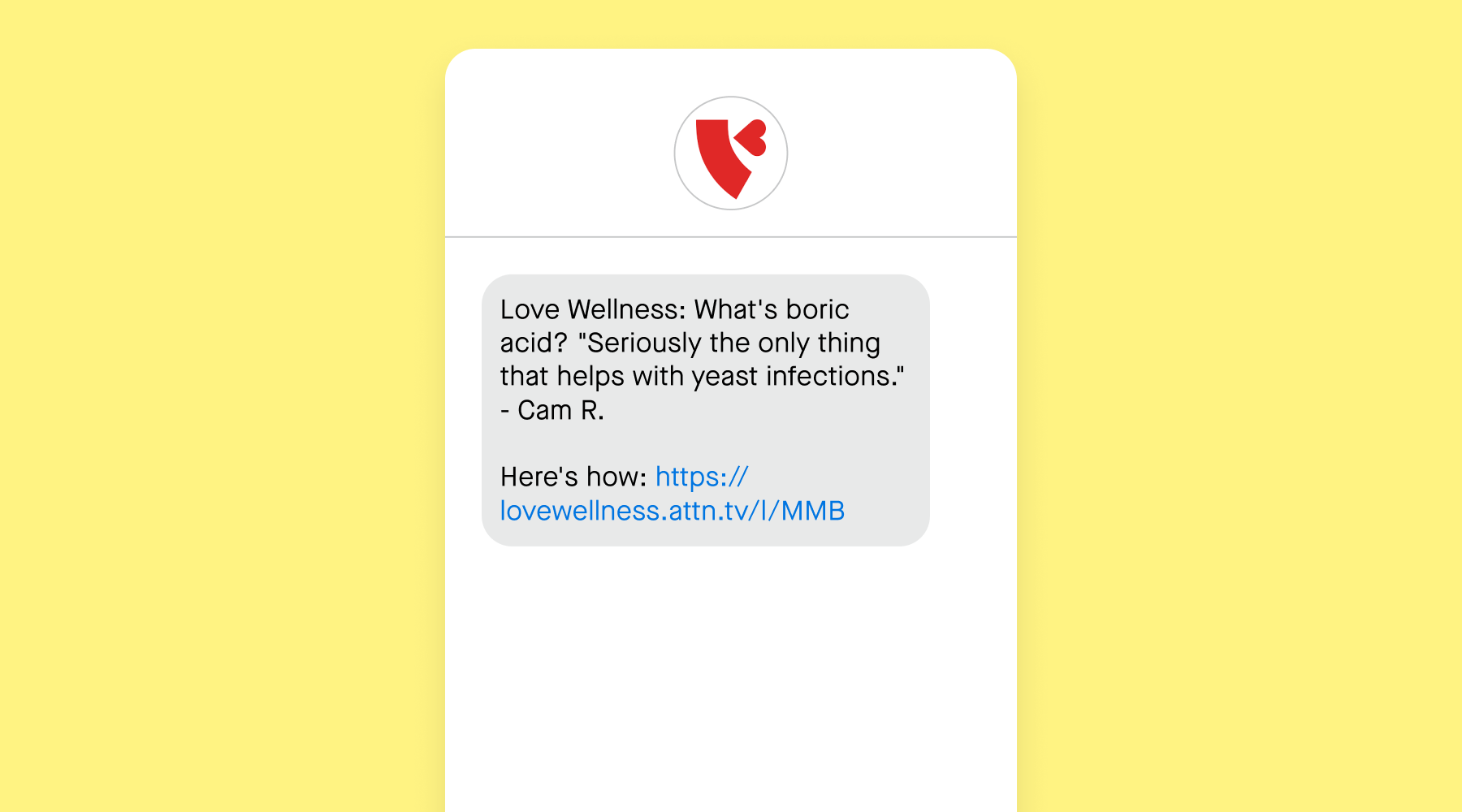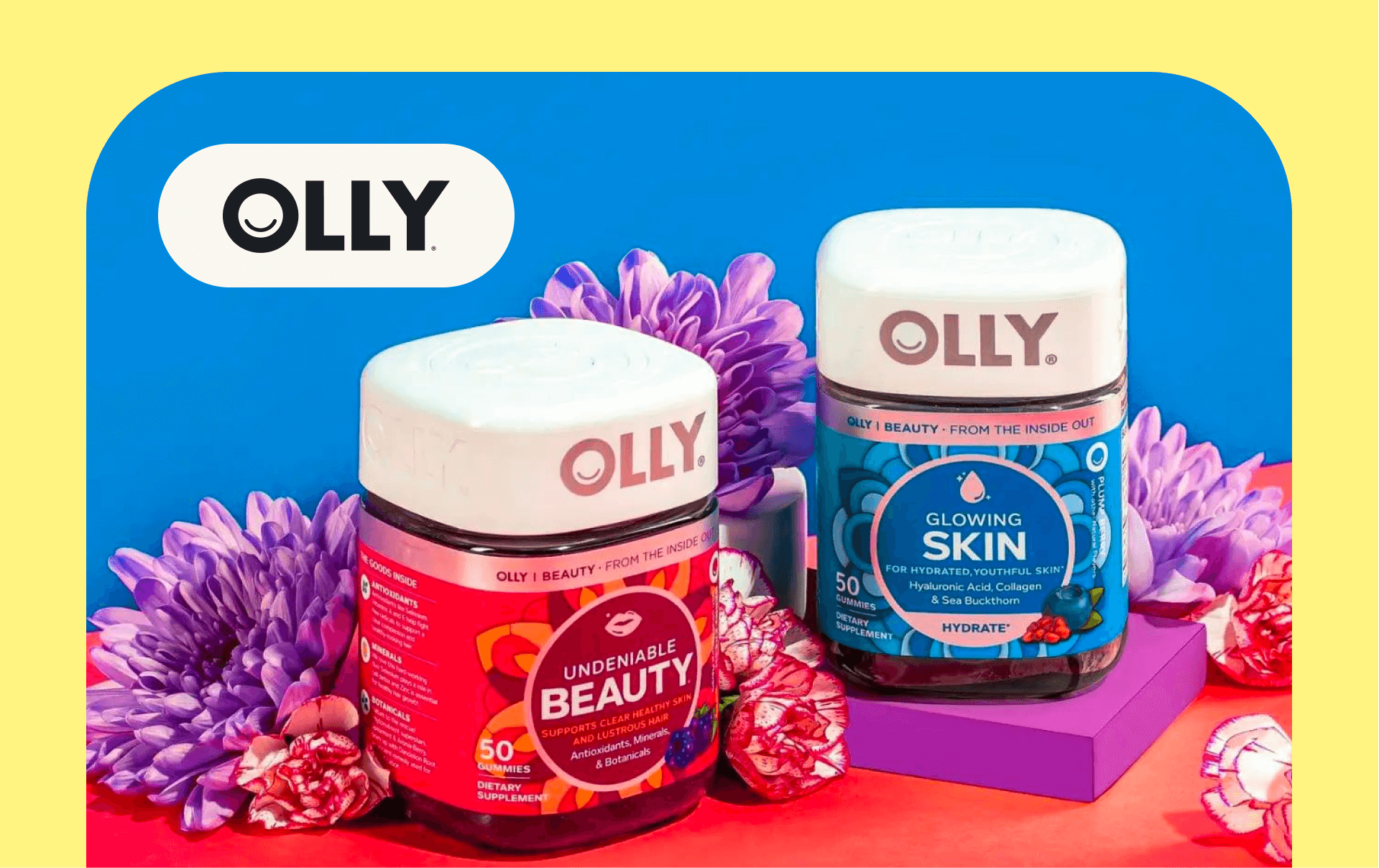Amanda Kwasniewicz is all about being customer-obsessed. She doesn't see CX teams as just cost centers or revenue drivers, but as valuable players that can help level up the entire company.
Amanda Kwasniewicz loves to carry the torch for the customer. As the VP of Customer Experience at Love Wellness, it’s her job to make sure people are happy with their experience—and if they're not, to find a way to make it better.
It's a mindset that Founder Lauren Bosworth has instilled as a core value of the brand from the start. They're dedicated to helping women improve their gut, brain, and vaginal health, and that's pretty personal, so the customer's experience has to be at the center of everything they do.
Kwasniewicz brings a wealth of knowledge to her role at Love Wellness, having previously held customer experience leadership positions at brands like Casper and Thinx. She deeply understands that when you put the customer first, it directly translates to business success.
In a recent conversation with Melissa Brown, Director of Client Strategy at Attentive, Kwasniewicz shared her thoughts on creating a customer feedback loop that drives growth, building a company-wide appreciation for CX, and more.
Listen to the full conversation below, and keep reading for the highlights.
Making sure customers feel heard
“I'm very humbled and lucky that our customers want to tell us everything. And I mean everything,” says Kwasniewicz. She’s not exaggerating. Love Wellness’ customers really aren’t shy about getting personal. They'll write paragraphs-long reviews, sharing details about their doctor's appointments, the ailments they're dealing with, what's going on in their relationships—you name it.
Their willingness to be open and honest has created a ton of opportunities for Kwasniewicz and her team to make a big impact on the customer side of the business. “We sit on a treasure trove of [insights], and we've been able to take everything we're seeing and turn it back around to make it really useful.”

The team has carefully crafted touchpoints to capture more of that unfiltered feedback from customers. After someone places their first order, they get a plain text email from the founder, saying thank you and sharing the story behind Love Wellness. "It's one of the most replied-to flows we've ever set up, and it's where a good chunk of the feedback in our CX inbox comes from," explains Kwasniewicz.
The comments and questions they get run the gamut: The website was easy to navigate. It wasn't easy to navigate. Do you have a rewards program? Do you have a product for this? Why don't you have a product for that? In short—all kinds of insights for the team to act on.
The next email comes from Kwasniewicz herself, after someone places a second order. “In that second email, I ask for feedback and people will let us have it, whether it's good, bad, medium, ugly, happy, sad, questioning, or praising us,” she shares, emphasizing that without that touchpoint asking, "Is there anything you want to tell us?" they would miss out on crucial input to help increase customer satisfaction across the board.
They’ve been able to drive changes operationally, and they’ve even changed product names based on customer’s responses to those emails (like their metabolism supplement, which is now called “Metabolove” to more accurately reflect the goal of the product).
Following through on customer feedback
Kwasniewicz’s team also uses Okendo Surveys to tap into customers’ candidness and understand how Love Wellness can better serve their audience. It’s a strategy that’s helped the company make informed decisions about how to grow and expand their product lineup. They’ve introduced new beauty SKUs, including a flavorless collagen, “because that's what people told us they wanted,” says Kwasniewicz.
When customers asked for more sustainability, the team created a survey to figure out what that could look like in practice. It ran through a range of options, such as switching from plastic to glass bottles and raising prices to cover costs, but none of the ideas really resonated. So the team went back to the drawing board and came up with a solution customers ultimately loved: jumbo sizes.
They laid out the benefits: Reducing shipping costs. Fewer boxes. Recycling a couple of bottles a year vs. a couple every month. "And people were like, ‘Yes. Done. I want it.’ So we started making jumbo sizes,” recalls Kwasniewicz.
The last step was to close the customer feedback loop by giving everyone who responded to the survey the chance to shop the new sizes first. And for Kwasniewicz, being able to say, “We made this because of you. You asked for it and it’s literally here,” is the most rewarding part of the process.
Building trust and respect for CX
CX is usually thought of as being just a cost center or revenue driver. But there's a major function that's often overlooked. "We're a feedback machine," Kwasniewicz says about her team. They hear everything customers are saying, whether they're happy, frustrated, or just need help resolving an issue. "At the end of the day," she adds, "my team are the brand experts...We know our customers."
That's why the company has a training program where everyone—from the office manager, designers, and procurement specialists, up to the VPs and CEO—has to spend six weeks doing CX work in Gorgias. They’re in the inbox, responding to customer inquiries and dealing with all sorts of situations, so they can experience the challenges and opportunities first-hand.
The initiative has brought the entire company closer together, fostering a better understanding of and respect for each other's expertise (not to mention new friendships and a book club). But it's not just about team bonding. The program has also uncovered valuable opportunities for improvement across departments.
The finance team realized that replacement orders weren't being tracked properly, so they set up a new automated process. The marketing team discovered some of their campaigns were confusing to customers, so they tweaked the copy.
"CX is viewed as a safety net, and we definitely are. But we can be proactive so the safety net never needs to be activated," says Kwasniewicz. The training program has helped instill that mindset company-wide, and now, CX is involved in everything.
Using data to improve loyalty and retention
What does a happy customer look like for Love Wellness? Their goal is to get everyone to subscribe to the products they use regularly. Subscribers are the brand’s best customers—they spend the most and are the most engaged in any channel.
But subscribing (and saving) isn't the only sign of loyalty. Looking at the data, it's all about understanding people's buying habits and being realistic about what the numbers mean, says Kwasniewicz. "[Our goal] is to make managing all these symptoms and issues that people have really accessible. So if you can only afford our cheapest product...but you've ordered 50 times from us. Great. Fantastic. You're never going to leave," she explains. "You don't have to be spending $200 every time you shop with us."
The team looks at a lot of different factors to make sure they're sending the right messages to the right customers. How many orders have they placed? Do they love discounts? What are they browsing? Buying? Do they have a subscription? Which channels are they engaged on? What kind of content do they like?

The answer to that last question is reviews. They always perform well on email and SMS because "people are very real with us, and they speak in such a way that people see themselves in that review," says Kwasniewicz. It's another way that first-hand feedback makes it into the customer experience.
Balancing AI with a personal touch
With AI and automation becoming more popular in customer service, Kwasniewicz stresses how important it is to make sure CX still feels personal. What can you automate without compromising the customer experience? And when does a real person need to step in?
For Kwasniewicz, striking the right balance means trying to automate the first few responses for common issues, like damaged deliveries, so her team only has to get involved when absolutely necessary. Since they usually need to ask the same three questions before they can sort out the issue, it makes sense to let AI handle that part of the process.
But when people have questions about products or sensitive topics, and they want a personal touch, Kwasniewicz doesn’t want them to get an automated response. “So many people say, 'I don't want to talk to my doctor about this. I'm afraid to ask anyone. I'm not comfortable talking with my friends, my parents, my aunts, whoever,' and they come to us,” she explains. “So I don't want AI to handle those conversations. That's where my team is supposed to step in."
Finding the right places and spaces for AI to not only play a role in the customer experience, but also elevate it, is key.
Where to find Amanda: https://www.linkedin.com/in/amanda-kwasniewicz/
Integrations mentioned: Okendo, Gorgias, Recharge
Email and SMS tip: Use snippets from five-star reviews in your campaigns to garner interest in specific products and drive purchases.
Want to hear (and learn) more from leading marketers at other brands? Check out these inspiring customer stories.








.png)










